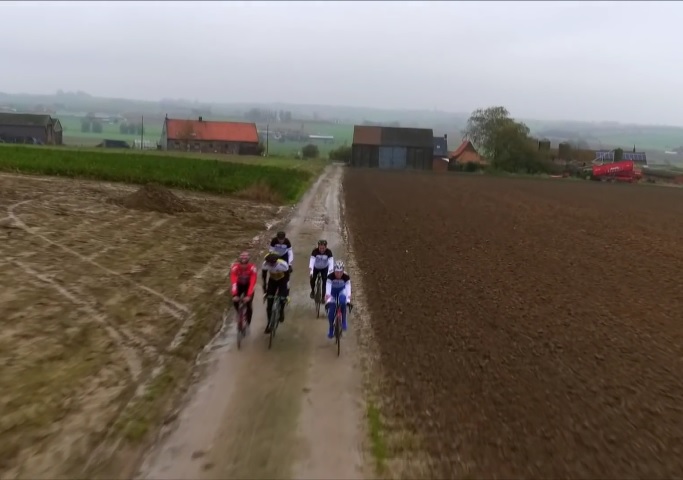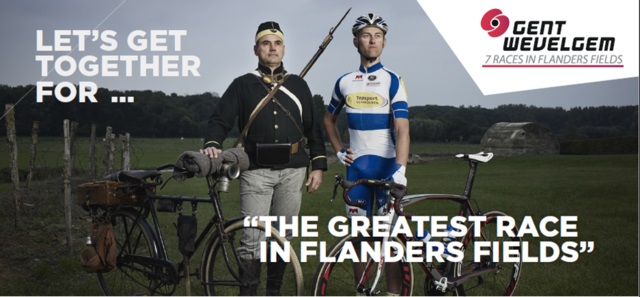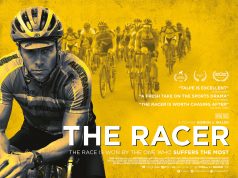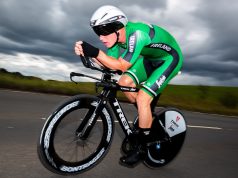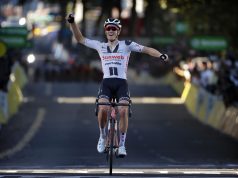The organisers of Ghent-Wevelgem have announced that the Christmas truce of 1914 will be marked during next year’s edition of the race.
The race takes place on Sunday 26 March and a detour will be made through the Plugstreets, in and around Ploegsteert, to commemorate the ceasefire that took place during the first year of World War One.
The peloton will make a detour on so-called ‘Green Roads’ – roads that are constructed by means of a special process and that are water- and air permeable. These semi-paved roads consist only of hard stone granules with a 100% natural binder. This binder is activated every time anew when there is contact with water. Hence, completely ecological.
Three Green Roads have been included in the itinerary which the organisers call ‘Plugstreets’ after the WWI experience centre built in Ploegsteert: “Plugstreet 14-18 Experience”. Ploegsteert was called “Plugstreet” by the British.
Plugstreets
“This pertains to 3 strips, semi-paved roads, or otherwise called Green Roads, with a total distance of 5.2 kilometres,” said Hans De Clercq, sports manager at Ghent-Wevelgem.
“The first two strips are slightly sloping and are located in open plains where the wind will have free reign. At the entrance to the 2nd strip is the Christmas Truce Monument that reflects the symbolism of the Christmas ceasefire of 1914.”
“Integrating this strip between the two Kemmel climbs will provide additional nervousness. There will be less opportunity to recover. The competition will not be ‘won’ here, but the chaff will be further separated from the wheat.”
Plugstreet 1 is the Hutteberg, also known as Hill 63. A strategic vantage point on the hill crest of Mesen and the underlying Heuvelland (hill country). The Catacombs are situated underneath the Hutteberg, an enormous dugout with 19 corridors, 1.200 beds and one-way traffic. The sports area is 2,1 km long and consists of a little hill and on the descent a treacherous chicane, near the ruins of the destroyed Breuvart castle, former observation post of the British.
The “Plugstreet 2” is reached after 800 metres of asphalt; one turns right at the Christmas Ceasefire: called Mud Lane in WWI, now luckily a half-paved road with six British cemeteries nearby. There is also a memorial along this road of the famous British rugby player Ronald Poulton Palmer. We ride onto the main road again after 1.3 km.
The stunning British Memorial casts its shadow on the peloton 250 meters further. Covering the same distance again, one turns to the right into the Munquestraat; 400 meters further, once again to the right, to “Plug Street 3”. The last Green Road is 0,6 km long and passes through the Ploegsteert woods.
The complete zone is 5,7 km long of which 4 km is half-paved. We reach Nieuwkerke via the ‘Rosenberg’ and ‘De Trompe’ hills and we join the course itinerary of 2016.
Christmas Ceasefire 1914
Life on the Western Front was certainly no joke in the winter of 1914. Both combating sides (the allies on the one side and Germany on the other side) had dug themselves in after the war ended in a stalemate. The Northern European landscape looked quite remarkable: there were two opposing trench systems reaching from the North Sea coast to the Swiss border with no man’s land and barbed wire fences in between.
More or less permanent facilities were erected on both sides, such as underground rooms, shelters, stoves and toilets. It was freezing on the Western Front on Christmas Eve 1914. No further offensives were therefore expected. Both sides tried to make the best of it.
The Germans started to celebrate Christmas first: there was some drinking and here and there a Christmas tree appeared or a lantern above the trenches. Somewhere a soldier began to sing Silent Night, Holy Night. The British felt they had to do something in return and sang ‘The First Noel’. The Germans applauded and then commenced with ‘O Tannenbaum’ and so it carried on.
The following day, on Christmas Day, soldiers came out of their trenches from both sides on the front. Field services were held in full view of the enemy without a single shot being fired. Both parties waved to one another and a few brave soldiers walked into no man’s land to greet one another.
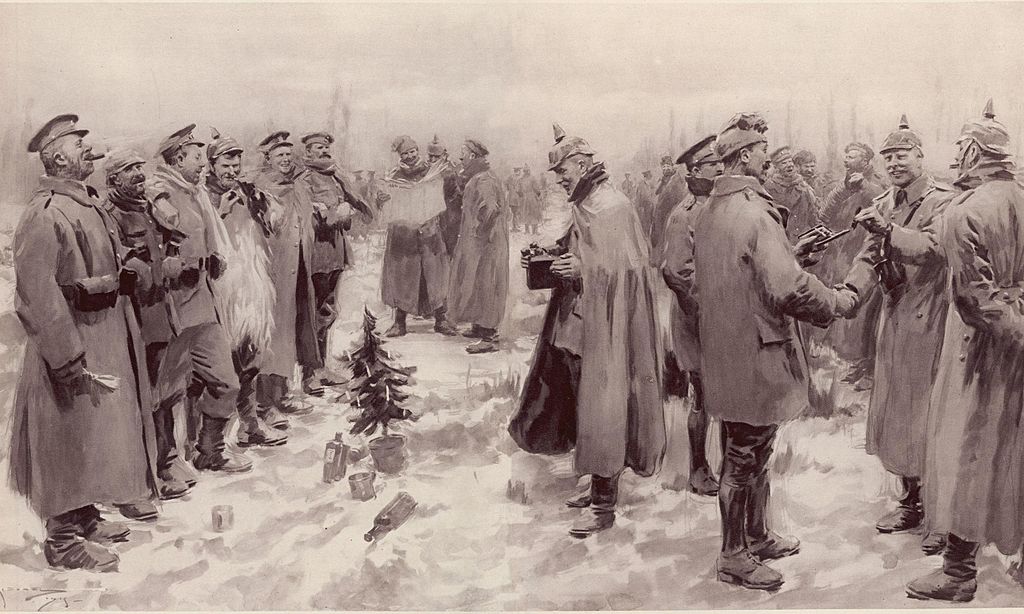
Small groups were initially formed; the groups then became bigger until hundreds of soldiers eventually stood by one another in some places. They were shaking hands; they offered one another a light and exchanged gifts: cigarettes, sausages and cigars, canned stew, tobacco and London newspapers.
In some places they even played some football. The most legendary match was between the British and the Germans in the Saint-Yvon region, near Ploegsteert. The Germans won with 3-2. The UEFA Christmas Truce Monument was inaugurated by Michel Platini in Komen-Waasten on 11 December 2014.
This spontaneous ceasefire was obviously much to the displeasure of the commanders. It affected the discipline; soldiers could indeed come to think that the enemy was also only human. The carefully crafted image of the enemy had to be preserved at all cost. Both sides carried out justified measures in order to avoid this in the future.
Nevertheless, there was already a twinning again during the Christmas of 1915, though on a smaller scale. The army leadership was furious, once again. In the autumn of 1916, orders were drawn up with a command to execute those who fraternized.
There was no more ceasefire that winter and also not in the one of 1917. However, there was a moment of peace on earth in 1914. The guns and cannons fell silent for a moment. There was room for Christmas just for a short while; for a little bit of camaraderie and humanity.
There has never been talk of such a spontaneous rapprochement between the besieged during any other conflict. It is and remains one of the most remarkable phenomena in the history of war.



